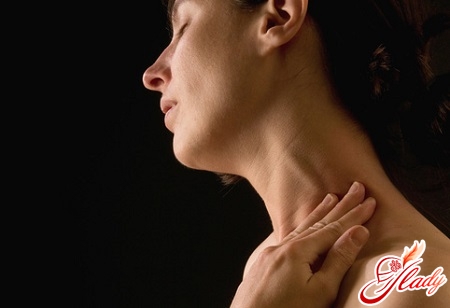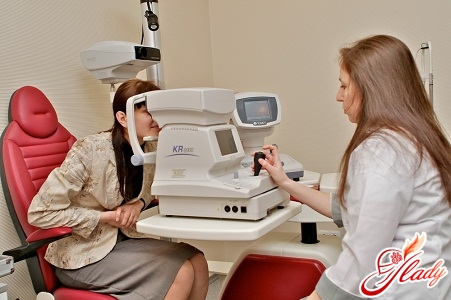
Esophageal diseases are diagnosed much earlierless often than stomach diseases. If a person is completely healthy, the food he or she eats passes through the esophagus without any delay. This means that this organ is less susceptible to various irritations than others. The human esophagus is a tube of cylindrical shape. Its length is approximately 30 cm. In two places, the esophagus has so-called physiological narrowings. Such narrowings are at the intersection of the esophagus with the aorta and stomach. The walls of the esophagus consist of a mucous membrane, submucosa, muscular and adventitial membranes. There are some diseases that specifically affect the esophagus. One of these diseases is esophageal erosion. What is such erosion? Esophageal erosion is considered to be a certain defect of the mucous membrane of the esophagus, namely the inner layer of this membrane. Such a defect can appear as a result of some complications of a hernia of the esophageal opening of the diaphragm, which develops as a result of the displacement of some of the internal organs from the abdominal to the chest through the diaphragmatic opening of the esophagus. Many people who have esophageal erosion do not even suspect that they have this disease. And this is not without reason. Very often, during this disease, the patient does not observe any pronounced symptoms.

Why there is erosion of the esophagus?
The causes of esophageal erosion can be different.As a rule, this disease is most often preceded by some pathological conditions, among which may be a weakened tone of the esophageal wall muscles, a significant increase in intrauterine pressure, stretching of the diaphragmatic esophageal opening, atrophy of the left side of the liver, a decrease in the length of the esophagus (as a result of a tumor or inflammatory process), the absence of fatty tissue under the diaphragm of the esophagus, curvature of the thoracic spine (typical for older people). All of the listed factors only contribute to the occurrence of sliding and axial hernias, which are the cause of further development of esophageal erosion. Do not forget that a lack of vitamins necessary for the body weakens the immune system, causes oxygen starvation of tissues. The cause of the erosion may also be a viral infection. Dysbacteriosis and obesity can also provoke this disease.
Symptoms and Diagnosis of Esophagus Erosion
It often happens that the erosion is insideesophagus does not manifest itself in any way. The patient does not have any clearly expressed symptoms, or they are very vague. But basically, people suffering from this disease very often complain of sharp or dull pain in the chest or in the abdominal part. Sometimes these pains are very similar to those that occur with angina. As a rule, pain occurs during eating, or when changing body position. Such pains can be accompanied by a feeling of distension from the inside or fullness. After taking a vertical position, they, as a rule, significantly decrease. So, the main symptoms of erosion include the following:
- frequent hiccough;
- regurgitation;
- eructation;
- vomiting;
- painful swallowing;
- increased salivation;
- bad breath.
Esophageal erosion is a very serious condition.a disease that can lead to very sad consequences if left untreated. Among such consequences may be bleeding inside the esophagus, which is accompanied by scarlet vomiting. Such bleeding can be provoked by alcoholic drinks and smoking, as well as various stressful situations. This disease is more common in young people, and older people suffer from it less often. An ulcer can also form at the site of erosion. If the doctor has made this diagnosis, then the patient will undergo an X-ray examination, which allows for an accurate determination of the presence of a hernia or reflux in the esophagus. In addition, the patient must undergo general and biochemical blood and urine tests, stool analysis, colonoscopy, and others.
How to treat esophagus erosion
It is worth saying that the treatment of esophageal erosion is notIn no case should it be carried out independently. It must be carried out under the supervision and control of the attending physician. Treatment with medications includes antacids, alginates and prokinetics. Antacids include such drugs as Almagel. This drug can cure moderate symptoms. During the treatment period, it should be used quite often. Thus, it is prescribed to be used every hour and a half after meals, as well as before bedtime. Alginates form a kind of thick foam on the inner surface of the stomach, which has a therapeutic effect with each throwing of contents into the esophagus (reflux). Prokinetics are able to reduce the time of contact of the esophagus with hydrochloric acid. They significantly improve gastric emptying, along with this, increase the pressure in the lower part of the esophagus. Prokinetics include such drugs as Motilium, Domperidone and others. As a rule, it is used 4 times a day, 10 mg. Treatment with these drugs lasts quite a long time. Treatment of erosion sometimes requires taking Pariet 20 mg. Treatment with this drug is carried out from 8 to 10 weeks.
How to eat when there is a disease
Too hot or too colddishes can only worsen the situation. It is not recommended to wash down food with plain water. To avoid the appearance of hydrochloric acid, it is necessary to eat food in small portions. The number of meals should be at least five per day. In the early stages of treatment, it is necessary to eat easily digestible food. The best dishes for the treatment period will be various cereals, cream soups, steamed meat, steamed fish. In the evening and at night, it is necessary to drink one glass of milk. During an exacerbation of the disease, it is recommended to completely exclude any fresh vegetables and fruits from the diet, because they can cause gas formation. Fennel decoction or dill water can significantly reduce gas formation.
Folk remedies for the treatment of the esophagus
During erosion it is very useful to takePotato juice. It should be taken at least 4 times a day in the amount of 50 ml. The course of treatment with potato juice should last up to 2 months. After 2 months, you need to take a break, after which you should repeat the treatment again. At least 3-4 such courses should be taken in one year. It is very easy to prepare potato juice, just grate the peeled potatoes on a coarse or fine grater, and then squeeze out the juice using gauze or use a juicer for this. Carrot juice is very useful for treating problems with the esophagus. It can be taken both separately and in combination with potato juice. The following decoction helps in the treatment of the esophagus: 20 grams of linden flowers, 20 grams of calendula and the same amount of fireweed, 10 grams of horsetail flowers, 10 grams of immortelle, 10 grams. celandine, the same amount of chamomile, St. John's wort, valerian root and 10 grams of fennel fruits, crush in a mortar and place in a glass container. You need to take 1 tablespoon of the crushed mixture and pour 0.5 liters of boiling water. Put it on the stove and cook over low heat for 7 minutes, then remove from heat and let it brew for another three hours, after which the solution must be filtered. Take the infusion 4 times a day 30-40 minutes before meals, half a glass at a time. You can also treat esophageal erosion with honey. Honey is an excellent stimulant for the gastrointestinal mucosa, and will be very useful in treating erosion. You do not have to prepare any infusion, you just need to take about 2 teaspoons of honey on an empty stomach. Honey will not only help restore the esophageal mucosa, but will also strengthen your health in general. A special herbal collection will also help eliminate the symptoms of esophageal problems. To prepare it, you will need hawthorn berries (20 g), corn silk (20 g), oregano (20 g), crushed dandelion roots (10 g), calamus roots (10 g), knotweed roots (10 g). Mix everything thoroughly and then place in an enamel bowl. Pour 0.5 liters of hot water over the mixture and boil for 10 minutes. After the decoction has boiled, strain it and pour it into a tightly closed container. It is advisable to store the decoction in the refrigerator. Take it after meals, 20-30 ml. The course of treatment with this decoction is 2 months, after which you need to take a break for 3 months and repeat the treatment again.









